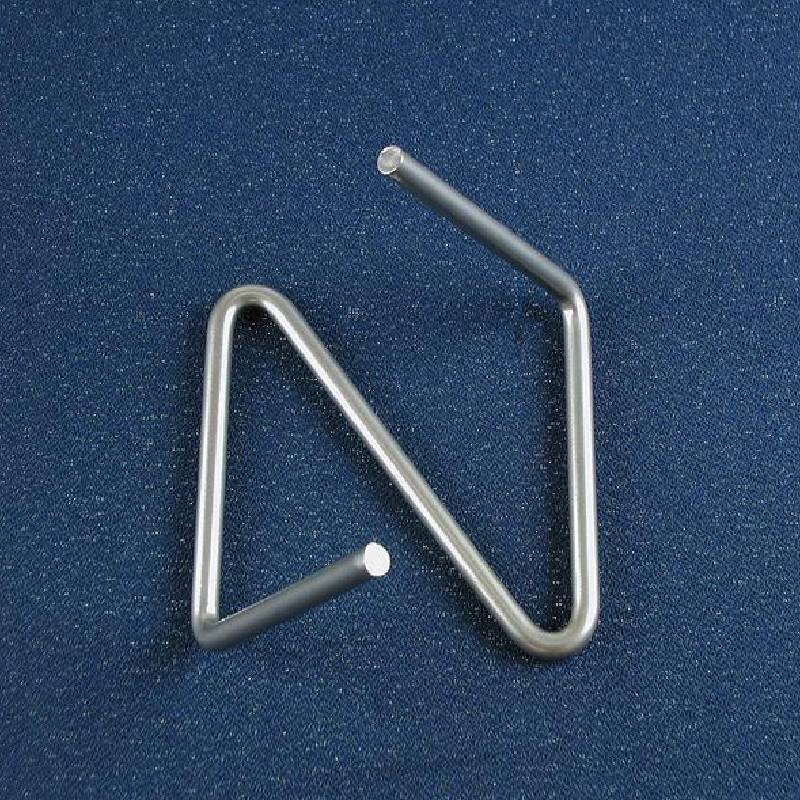
- Mobile Phone
- +8613931874955
- sales@cntcmetal.com
Stainless Steel Thin Coat Angle Bead for Seamless Finishing and Strong Support
The Versatility of Stainless Steel Thin Coat Angle Beads
In the realm of modern construction and interior design, stainless steel thin coat angle beads have emerged as a pivotal component in achieving a flawless finish for various surfaces. These angle beads, designed to reinforce and protect the edges of drywall or plaster at internal and external corners, offer distinct advantages that have made them a popular choice among builders and interior designers.
Understanding Stainless Steel Thin Coat Angle Beads
Stainless steel thin coat angle beads are precisely engineered strips that serve as guides for achieving a perfectly smooth finish on interior walls and ceilings. Unlike traditional angle beads, which may be made from plaster or galvanised steel, stainless steel offers unique properties that far exceed those of its counterparts. The thin profile of these beads ensures that they can be easily embedded into thin coats of plaster, making them ideal for applications that require a smooth, sleek appearance.
One of the most significant advantages of stainless steel is its resistance to corrosion. In environments where moisture is prevalent, conventional metal beads can rust and compromise the integrity of the structure over time. Stainless steel's alloy composition makes it impervious to rust and decay, thus ensuring durability and longevity. This quality is particularly advantageous in bathrooms, kitchens, and other high-humidity areas.
Installation Benefits
The installation process of stainless steel thin coat angle beads is straightforward, which appeals to both professionals and DIY enthusiasts. Adhering to standard installation techniques, these angle beads can be quickly fixed to the drywall with screws or adhesive, allowing for efficient application. Upon installation, a thin layer of plaster can be applied over the beads to create crisp, clean lines at the corners, which enhances the overall aesthetics of the wall.
Furthermore, the thin profile of these beads means they can be layered easily, accommodating various thicknesses of plaster. This adaptability ensures that the finished surface remains uniformly flat, which is essential for achieving a professional-grade finish. As a result, projects can achieve more consistent results in less time compared to using thicker, more cumbersome alternatives.
stainless steel thin coat angle bead

Aesthetic Appeal
Stainless steel thin coat angle beads also provide an outstanding aesthetic advantage. The slim edge created by these beads can help achieve sharp, clean lines that enhance the architectural beauty of a space. In today’s design landscape, where minimalism is often celebrated, these beads blend seamlessly into the background of a room, ensuring that the focus remains on the broader design elements rather than unsightly seams or rough edges.
Moreover, stainless steel can complement a variety of interior styles—from modern to industrial—making it a versatile choice for numerous applications. Whether designing a contemporary office space, a sleek restaurant, or a cozy home, stainless steel angle beads can elevate the finish of every project.
Environmental Considerations
In the wake of growing environmental awareness, stainless steel stands out as an eco-friendly material. Its durability means that products made from stainless steel have a longer lifespan, which ultimately reduces waste over time. Furthermore, stainless steel is recyclable, which aligns with the values of sustainable construction practices.
Conclusion
Stainless steel thin coat angle beads represent a sophisticated solution for achieving immaculate finishes in both residential and commercial spaces. Their robustness, ease of installation, and aesthetic versatility make them an invaluable component in modern construction. As the demand for quality finishes continues to rise, the use of stainless steel thin coat angle beads will likely become even more prevalent, ensuring that architects and designers can meet the needs of their clients while maintaining the integrity and appeal of their projects. As the industry evolves, investing in quality materials like stainless steel will, without a doubt, pay dividends in both aesthetics and functionality.
share:
-
Why Sacrificial Formwork Is Redefining Underground ConstructionNewsJun.06,2025
-
The Structural Dynamics of Modern Concrete: How Snake Spacers Revolutionize Flexible ReinforcementNewsJun.06,2025
-
Snake Spacers Smart-Lock Concrete Reinforcement with Surgical PrecisionNewsJun.06,2025
-
Snake Spacers: Reinforcement Precision for Modern Concrete ProjectsNewsJun.06,2025
-
Snake Spacers Powering Concrete's Structural DNANewsJun.06,2025
-
Slither into Success: Snake Spacers' Precision Bite for Unbreakable ReinforcementNewsJun.06,2025
-
Sacrificial Formwork: Building Stronger, Faster, and Safer StructuresNewsJun.06,2025



















